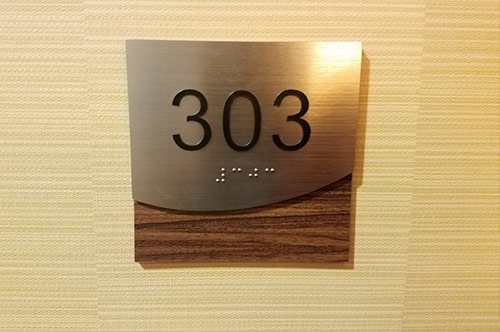In today’s diverse and inclusive society, creating accessible environments is more important than ever. ADA signs, mandated by the Americans with Disabilities Act (ADA), play a crucial role in ensuring that public spaces are navigable for individuals with disabilities. These signs are not just about compliance; they are about creating environments where everyone, regardless of their physical abilities, can move around with ease and confidence. Let’s delve into why ADA signs are essential and how they contribute to an inclusive experience.
What Are ADA Signs?
ADA signs are specifically designed to meet the accessibility requirements outlined by the Americans with Disabilities Act. This federal law ensures that public spaces, such as buildings, transportation systems, and recreational areas, are accessible to individuals with disabilities. ADA signs include features such as braille, tactile text, and high-contrast colors to accommodate a range of sensory needs. The primary goal of these signs is to provide clear and accessible information to everyone, including those with visual or hearing impairments.
Why ADA Signs Are Crucial
- Legal Compliance
One of the primary reasons for implementing ADA signs is legal compliance. The ADA mandates that public and commercial facilities provide accessible signage to ensure equal access for individuals with disabilities. Failure to comply with these requirements can result in legal consequences, including fines and lawsuits. By adhering to ADA guidelines, businesses and organizations demonstrate their commitment to accessibility and avoid potential legal issues.
- Promoting Inclusivity
ADA signs are integral to creating an inclusive environment. By incorporating features like braille and tactile text, these signs ensure that individuals with visual impairments can navigate spaces independently. Additionally, clear and accessible signage helps people with cognitive disabilities, such as those with learning disabilities or dementia, to better understand and navigate their surroundings.
- Enhancing User Experience
Effective ADA signage not only ensures compliance but also improves the overall user experience. When people can easily find restrooms, exits, and other essential areas, their experience in the space is more positive and stress-free. Well-designed ADA signs contribute to a welcoming atmosphere, making all users feel valued and respected.
Key Features of ADA Signs
To meet ADA standards, signage must incorporate several key features:
- Braille: ADA signs must include braille to assist individuals with visual impairments. The braille must be placed at a consistent location and size to ensure readability.
- Tactile Text: Raised, tactile text is essential for individuals with low vision. The text should be easily readable by touch, with characters and symbols raised from the surface of the sign.
- High Contrast: ADA signs should use high-contrast colors to make text and symbols more visible. Typically, dark text on a light background or light text on a dark background is recommended.
- Readable Fonts: Fonts used on ADA signs should be simple, sans-serif, and large enough to be easily read by individuals with visual impairments. Avoid decorative or script fonts that can be difficult to decipher.
- Symbolism: Universal symbols, such as those for restrooms or elevators, should be used to provide clear, intuitive information. These symbols should be accompanied by text to ensure comprehensibility.
Best Practices for Implementing ADA Signs
When integrating ADA signs into your facility, consider these best practices:
- Consult ADA Guidelines: Familiarize yourself with the specific requirements of the ADA standards to ensure that your signage complies with all regulations. The ADA website and local building codes provide valuable resources and guidelines.
- Incorporate User Feedback: Engage individuals with disabilities in the design process to gain insights into their needs and preferences. Their feedback can help ensure that the signage effectively meets diverse accessibility requirements.
- Regularly Review and Update: Accessibility needs and standards can evolve, so it’s important to regularly review and update your ADA signs. Ensure that they remain compliant with current regulations and continue to meet the needs of all users.
- Training and Awareness: Educate staff and facility managers about the importance of ADA signage and how to maintain it. Proper training ensures that everyone understands their role in supporting accessibility and inclusivity.
Conclusion
ADA signs are more than a regulatory requirement—they are a fundamental aspect of creating accessible and inclusive environments. By adhering to ADA standards, you not only ensure legal compliance but also promote a positive user experience for individuals with disabilities. Investing in high-quality, well-designed ADA signage demonstrates a commitment to inclusivity and enhances the accessibility of your space for everyone. Embracing ADA signage is a step toward a more equitable world, where all individuals can navigate and enjoy public spaces with confidence and ease.
